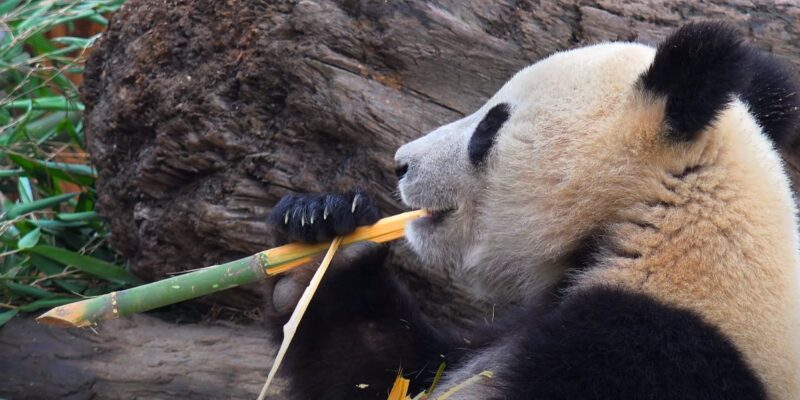Think of a world where giant pandas spend hours eating bamboo and elephants roam the savanna, munching on grass. This isn’t just fascinating; it’s vital for our ecosystems. These 10 herbivores, from the towering giraffes to the swimming manatees, have diets that deeply impact the environment around them.
Let’s take a closer look at what these plant-eaters eat and why it matters.
Key Takeaways
- Elephants – Consume grasses, leaves, bamboo, bark, and roots.
- Giraffes – Eat leaves and twigs of trees and shrubs, especially acacia.
- Giant Pandas – Their diet is 99% bamboo (stems, leaves, and shoots).
- Koalas – Feed almost exclusively on eucalyptus leaves.
- Green Sea Turtles – Eat seagrasses and algae.
- American Bison – Graze on various grasses and plants.
- Rhinos – White rhinos graze on grasses, while black rhinos prefer to browse on leaves and fruit.
- Manatees – Consume a wide array of submerged, floating, and emergent plants.
- Red Kangaroos – Feed on grasses, leaves, and shoots.
- Gorillas – Their diet consists of leaves, shoots, stems, bark, and fruit.
1. Elephants
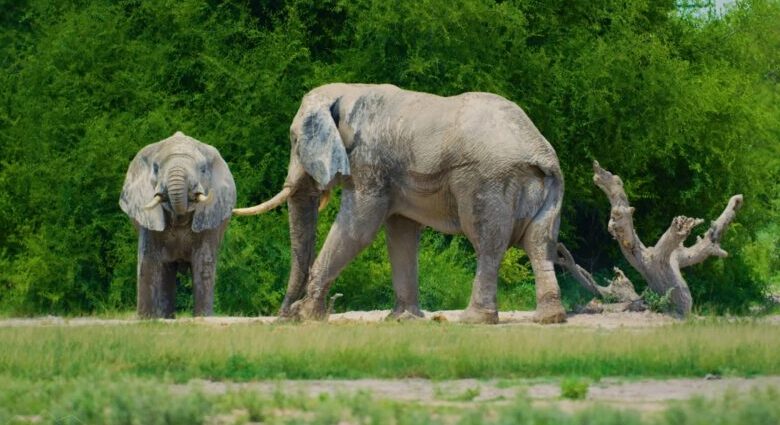
Elephants, the largest land animals alive today, are distinguished herbivores, consuming up to 300 pounds of foliage daily. They feast on a variety of vegetation, including grasses, leaves, bamboo, bark, and roots. Elephants play a crucial role in their ecosystems by dispersing seeds and creating pathways in dense vegetation, which helps other animals.
2. Giraffes
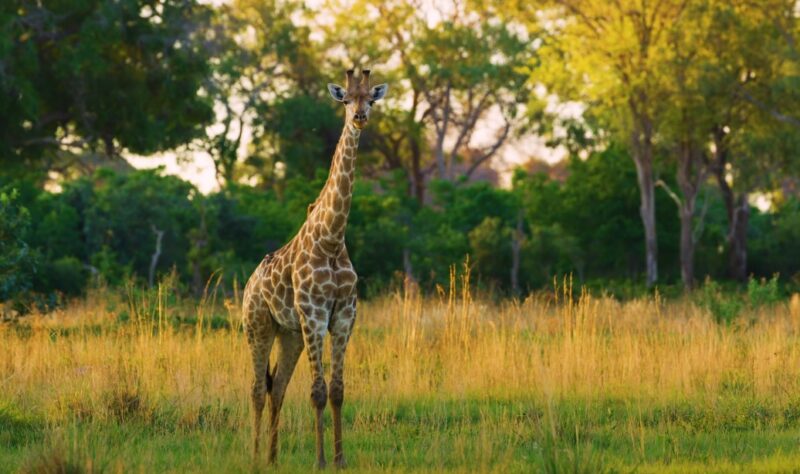
With their long necks and legs, giraffes are uniquely adapted to reach vegetation inaccessible to other herbivores. They primarily eat the leaves and twigs of trees and shrubs, with a particular fondness for acacia species. Their tongue is long and the saliva is thick and sticky, helping them to eat around the thorns of acacia trees without injury.
Giraffes can consume up to 75 pounds of foliage each day, serving as important pollinators and seed dispersers in their habitats.
3. Giant Pandas
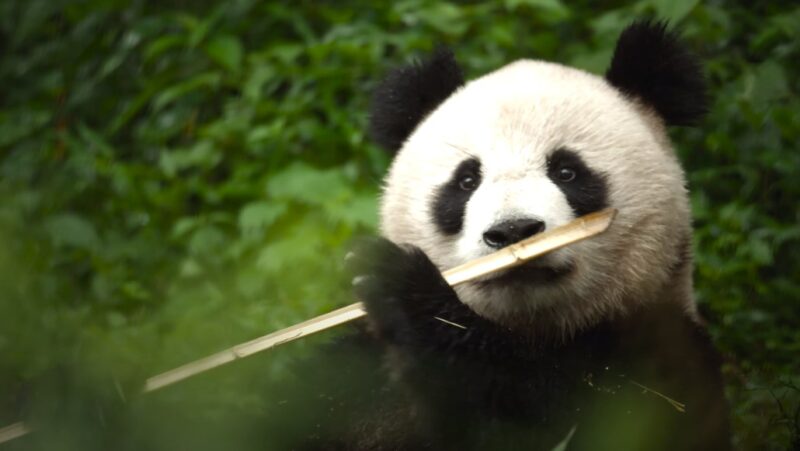
Giant pandas have a diet that is 99% bamboo. They eat the stems, leaves, and shoots of various bamboo species, which require a unique thumb-like appendage to grasp and strip the bamboo. Despite their digestive system being more suited to a carnivorous diet, pandas have adapted to process their fibrous bamboo diet efficiently.
4. Koalas
Koalas are marsupials, not bears, and they have a specialized diet consisting almost exclusively of eucalyptus leaves. They have a highly selective appetite, eating leaves from only a few of the over 600 eucalyptus species. Eucalyptus leaves are toxic to most animals, but koalas have adapted to detoxify the poison in their specialized digestive system.
5. Green Sea Turtles
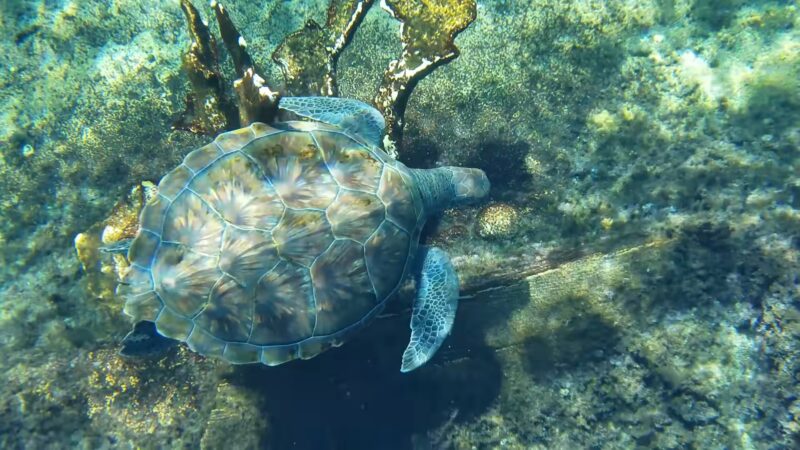
Though not all sea turtle species are herbivores, the green sea turtle predominantly eats seagrasses and algae. This diet helps maintain the health of the seagrass beds, which are crucial for the survival of many marine species. Green sea turtles have serrated jaws that enable them to tear and chew tough, fibrous sea plants.
6. American Bison
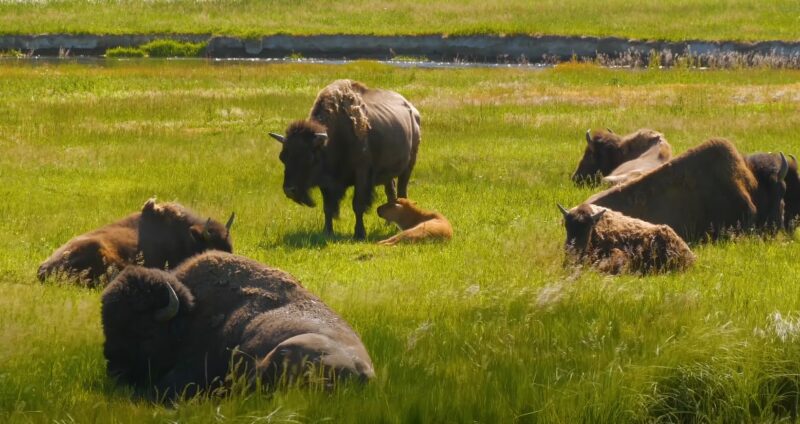
Once roaming the grasslands of North America in vast herds, the American Bison plays a crucial role in maintaining the health of prairies. They feed on a variety of grasses and plants, their grazing patterns helping to stimulate the growth of native plants.
Bison also help with seed dispersal through their fur and feces, contributing to a diverse and healthy grassland ecosystem.
7. Rhino
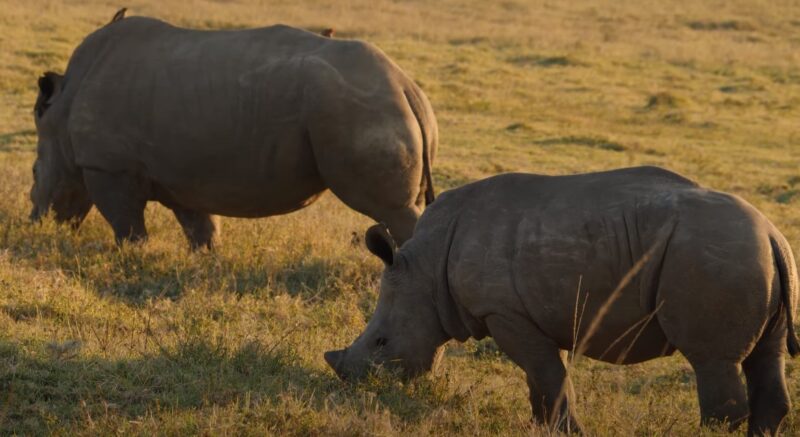
Rhinoceroses, with their impressive size and distinct horns, are primarily grazers. The white rhino, in particular, has a wide mouth suited for grazing on grasses. In contrast, the black rhino, which prefers to browse, uses its pointed lip to pluck leaves and fruit from bushes and trees.
Rhinos play a significant role in their habitats by shaping vegetation structure and facilitating seed dispersal.
8. Manatees
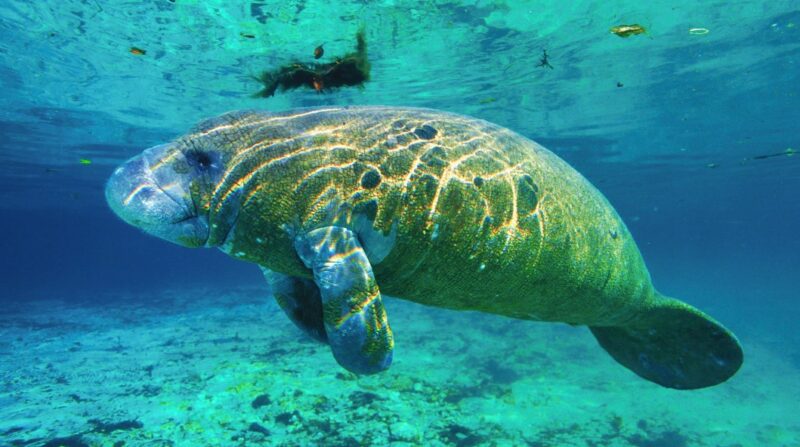
Manatees, often called sea cows, are aquatic mammals that feed on a wide array of submerged, floating, and emergent plants in freshwater and saltwater environments. They consume about 10-15% of their body weight in vegetation daily, acting as crucial regulators of aquatic plant growth.
This grazing helps maintain healthy waterways and supports a diverse aquatic ecosystem.
9. Red Kangaroos
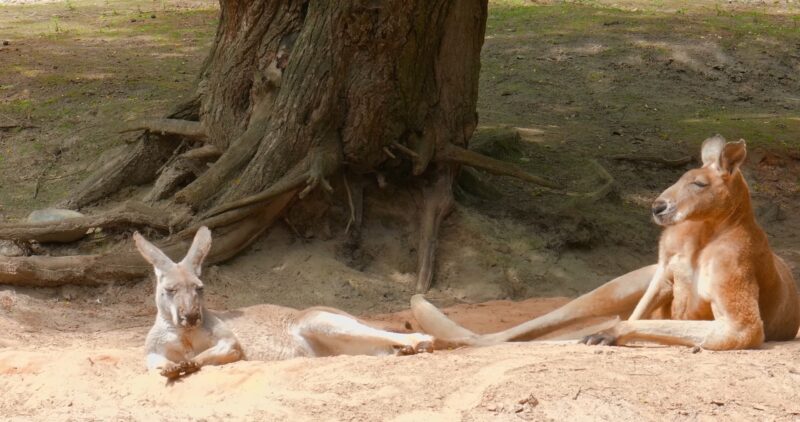
The red kangaroo, Australia’s largest marsupial, thrives in the arid and semi-arid regions of the Australian outback. These herbivores feed on grasses, leaves, and shoots, with a preference for green vegetation.
Their diet is low in nutrients, which they compensate for by having a highly efficient digestive system that extracts maximum moisture from their food, an essential adaptation for surviving in dry environments.
10. Gorillas
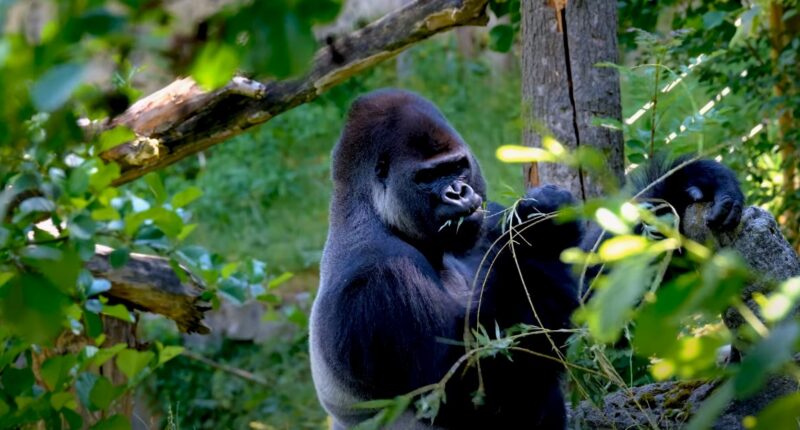
Gorillas, residing in the dense forests of central Africa, are the world’s largest primates and embody the gentle giant persona. Primarily herbivorous, their diet consists of leaves, shoots, stems, bark, and fruit, with a particular fondness for bamboo in some regions. This diet varies seasonally and regionally, depending on the availability of different plant species.
Gorillas have a complex digestive system that allows them to break down tough plant fibers, extracting necessary nutrients to support their large bodies. They play a crucial role in their habitat by acting as seed dispersers.
Consuming fruit and traveling long distances, gorillas help in spreading seeds throughout the forest, promoting forest regeneration and biodiversity. Despite their size and strength, gorillas have a relatively low metabolic rate, which is why their diet is predominantly vegetative.
They spend a significant portion of their day foraging and eating to obtain enough nutrients from their fibrous diet.
FAQs
Summary
The world of herbivorous mammals is incredibly diverse, ranging from the massive elephant to the serene manatee. Each species plays a vital role in its ecosystem, whether by maintaining plant populations, dispersing seeds, or even shaping the landscape itself. Let’s keep these essential eaters and their homes safe for the future.
Related Posts:
- What Do Raccoons Eat? - How Their Diets Overlap and Differ
- Herbivore Teeth - Dental Adaptations for Plant-Based Diets
- How Long Do Bears Live? Exploring Their Lifespans
- Characteristics Of North American Bears - A…
- What Do Black Bears Eat? Insights into Their Diet
- How Do Opossums Survive Winter? Discover Their…


